Glycolipid transfer protein expression is affected by glycosphingolipid synthesis
- PMID: 23894633
- PMCID: PMC3722133
- DOI: 10.1371/journal.pone.0070283
Glycolipid transfer protein expression is affected by glycosphingolipid synthesis
Erratum in
-
Correction: Glycolipid Transfer Protein Expression Is Affected by Glycosphingolipid Synthesis.PLoS One. 2013 Oct 16;8(10):10.1371/annotation/712bb339-6073-4e62-9f68-b285caedd913. doi: 10.1371/annotation/712bb339-6073-4e62-9f68-b285caedd913. eCollection 2013. PLoS One. 2013. PMID: 29220844 Free PMC article.
Abstract
Members of the glycolipid transfer protein superfamily (GLTP) are found from animals and fungi to plants and red micro-alga. Eukaryotes that encode the glucosylceramide synthase responsible for the synthesis of glucosylceramide, the precursor for most glycosphingolipids, also produce GLTPs. Cells that does not synthesize glucosylceramide neither express GLTPs. Based on this genetic relationship there must be a strong correlation between the synthesis of glucosylceramide and GLTPs. To regulate the levels of glycolipids we have used inhibitors of intracellular trafficking, glycosphingolipid synthesis and degradation, and small interfering RNA to down-regulate the activity of glucosylceramide synthase activity. We found that GLTP expression, both at the mRNA and protein levels, is elevated in cells that accumulate glucosylceramide. Monensin and brefeldin A block intracellular vesicular transport mechanisms. Brefeldin A treatment leads to accumulation of newly synthesized glucosylceramide, galactosylceramide and lactosylceramide in a fused endoplasmic reticulum-Golgi complex. On the other hand, inhibiting glycosphingolipid degradation with conduritol-B-epoxide, that generates glucosylceramide accumulation in the lysosomes, did not affect the levels of GLTP. However, glycosphingolipid synthesis inhibitors like PDMP, NB-DNJ and myriocin, all decreased glucosylceramide and GLTP below normal levels. We also found that an 80% loss of glucosylceramide due to glucosylceramide synthase knockdown resulted in a significant reduction in the expression of GLTP. We show here that interfering with membrane trafficking events and simple neutral glycosphingolipid synthesis will affect the expression of GLTP. We postulate that a change in the glucosylceramide balance causes a response in the GLTP expression, and put forward that GLTP might play a role in lipid directing and sensing of glucosylceramide at the ER-Golgi interface.
Conflict of interest statement
Figures


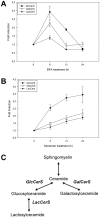
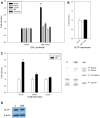
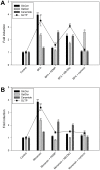

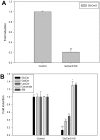
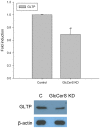
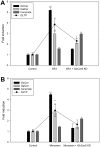
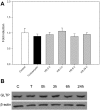
Similar articles
-
Human glycolipid transfer protein--intracellular localization and effects on the sphingolipid synthesis.Biochim Biophys Acta. 2007 Nov;1771(11):1353-63. doi: 10.1016/j.bbalip.2007.09.001. Epub 2007 Sep 21. Biochim Biophys Acta. 2007. PMID: 17980653
-
Pre- and post-Golgi translocation of glucosylceramide in glycosphingolipid synthesis.J Cell Biol. 2007 Oct 8;179(1):101-15. doi: 10.1083/jcb.200704091. J Cell Biol. 2007. PMID: 17923531 Free PMC article.
-
The glycolipid transfer protein (GLTP) domain of phosphoinositol 4-phosphate adaptor protein-2 (FAPP2): structure drives preference for simple neutral glycosphingolipids.Biochim Biophys Acta. 2013 Feb;1831(2):417-27. doi: 10.1016/j.bbalip.2012.10.010. Epub 2012 Nov 16. Biochim Biophys Acta. 2013. PMID: 23159414 Free PMC article.
-
Specificity of the mammalian glycolipid transfer proteins.Chem Phys Lipids. 2016 Jan;194:72-8. doi: 10.1016/j.chemphyslip.2015.07.018. Epub 2015 Jul 30. Chem Phys Lipids. 2016. PMID: 26234207 Review.
-
Glycolipid transfer proteins and membrane interaction.Biochim Biophys Acta. 2009 Jan;1788(1):267-72. doi: 10.1016/j.bbamem.2008.10.003. Epub 2008 Oct 25. Biochim Biophys Acta. 2009. PMID: 19007748 Review.
Cited by
-
Role of Globotriaosylceramide in Physiology and Pathology.Front Mol Biosci. 2022 Feb 23;9:813637. doi: 10.3389/fmolb.2022.813637. eCollection 2022. Front Mol Biosci. 2022. PMID: 35372499 Free PMC article. Review.
-
Glycolipid transfer protein knockout disrupts vesicle trafficking to the plasma membrane.J Biol Chem. 2023 Apr;299(4):104607. doi: 10.1016/j.jbc.2023.104607. Epub 2023 Mar 15. J Biol Chem. 2023. PMID: 36924944 Free PMC article.
-
Glucosylceramide acyl chain length is sensed by the glycolipid transfer protein.PLoS One. 2018 Dec 14;13(12):e0209230. doi: 10.1371/journal.pone.0209230. eCollection 2018. PLoS One. 2018. PMID: 30550553 Free PMC article.
-
Upregulation of human glycolipid transfer protein (GLTP) induces necroptosis in colon carcinoma cells.Biochim Biophys Acta Mol Cell Biol Lipids. 2019 Feb;1864(2):158-167. doi: 10.1016/j.bbalip.2018.11.002. Epub 2018 Nov 22. Biochim Biophys Acta Mol Cell Biol Lipids. 2019. PMID: 30472325 Free PMC article.
-
Synthesis of a novel photoactivatable glucosylceramide cross-linker.J Lipid Res. 2016 Sep;57(9):1728-36. doi: 10.1194/jlr.D069609. Epub 2016 Jul 13. J Lipid Res. 2016. PMID: 27412675 Free PMC article.
References
-
- Degroote S, Wolthoorn J, van Meer G (2004) The cell biology of glycosphingolipids. Semin Cell Dev Biol 15: 375–387. - PubMed
Publication types
MeSH terms
Substances
LinkOut - more resources
Full Text Sources
Other Literature Sources

